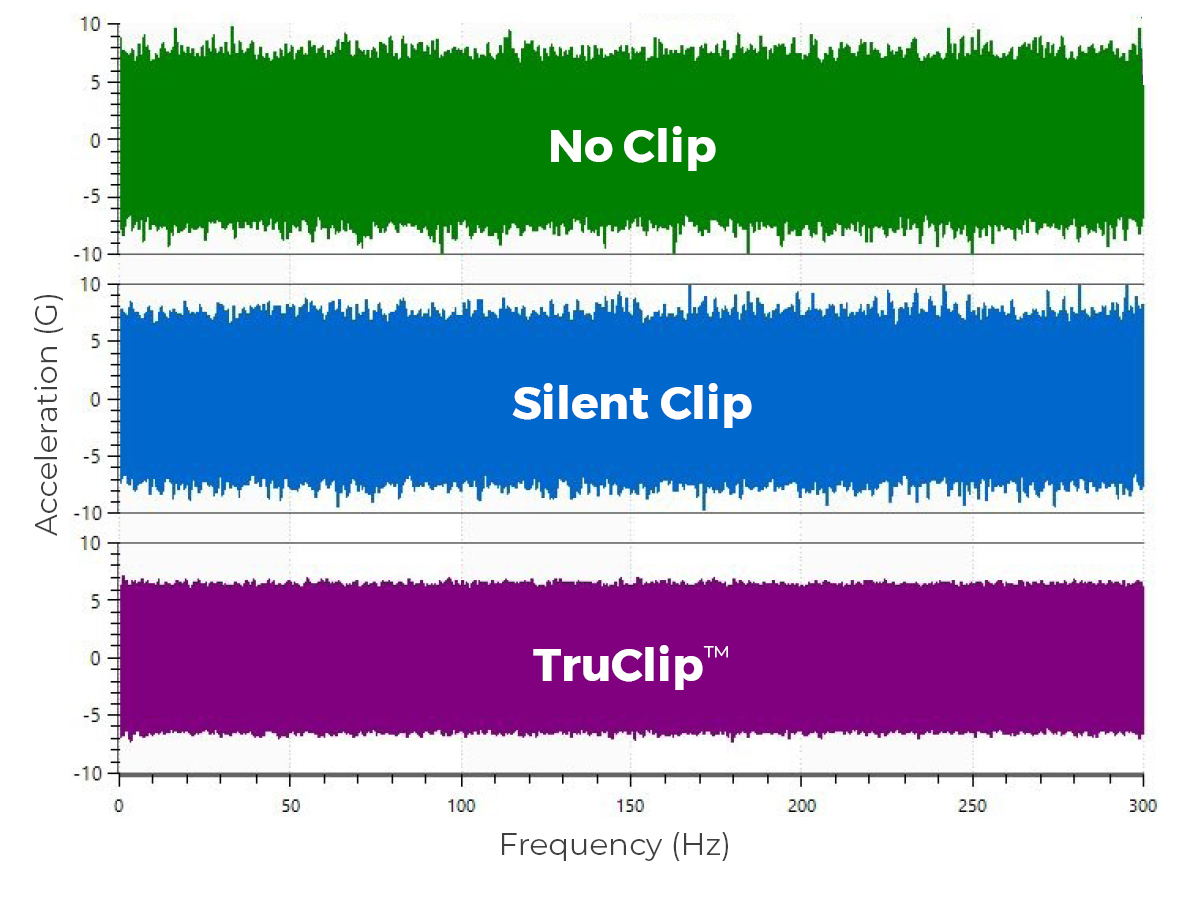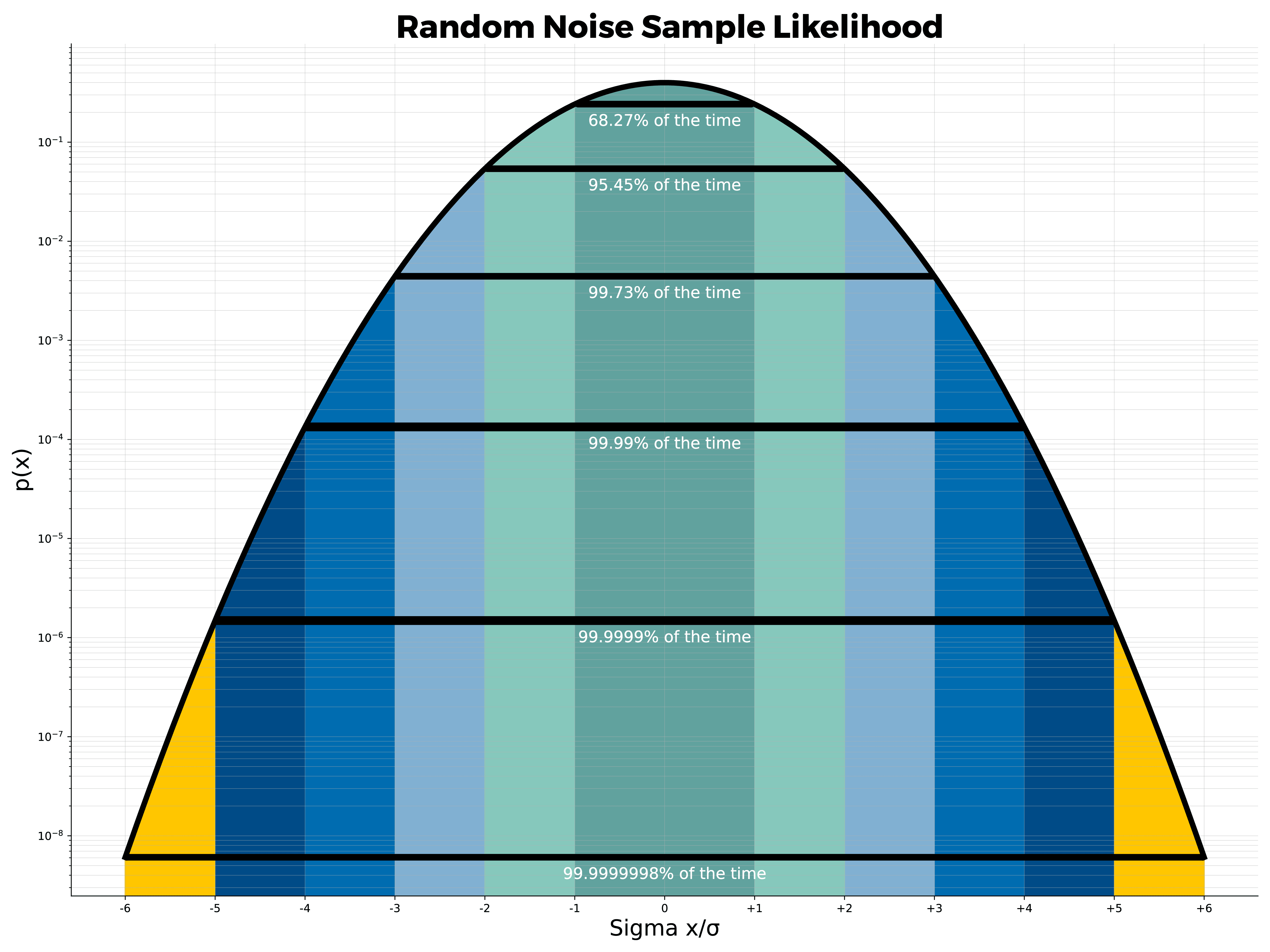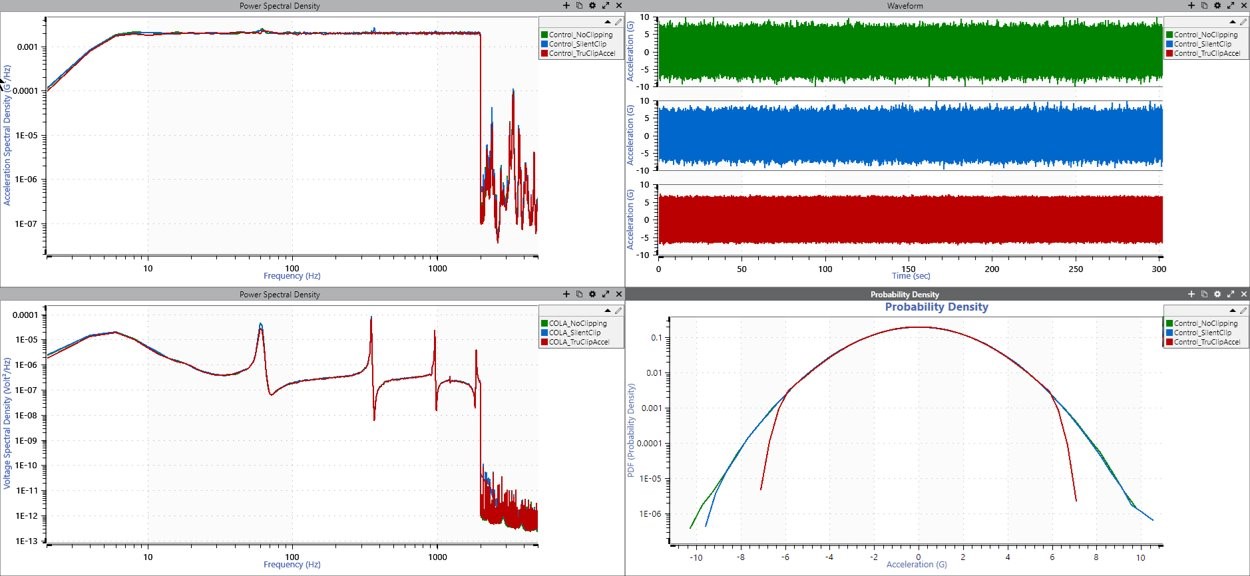How Clipping Must Be Done
Standard controllers apply clipping to the drive output, which reduces the extreme voltage peaks so that it is no longer Gaussian. This method does not restrict motion on the shaker table, which is necessary if an engineer is running a random test near shaker limits.
TruClip is a new method of clipping developed by Vibration Research that utilizes closed-loop control to reduce high sigma peaks on the shaker table. This clipping method applies to the control measurement and minimizes the chance of exceeding maximum acceleration, velocity, or displacement limits.

Add TruClip to a Random Vibration Test When
- Minimizing extreme peaks experienced by a sensitive DUT
- Running a test near the maximum displacement, velocity, or acceleration of the shaker
- Running a test that only requires a specific acceleration, velocity, or displacement range
TruClip PDF
Reducing Extreme Peaks
Peaks of 5-sigma (5x the RMS level) or more are possible during a Gaussian random test and are typically undesirable. These peaks may exceed the shaker limits for acceleration, velocity, or displacement (stroke) or damage a sensitive product.
TruClip affects the control acceleration, velocity, or displacement and limits the peak sigma values. Engineers can apply it to protect the shaker system or product while running a random test.
What is Sigma Clipping?
Clipping levels are defined in sigma (σ) values in relation to the profile demand. The probability of a Gaussian random signal falling within X sigma is:
 ±1σ: 68.27% of the time
±1σ: 68.27% of the time- ±2σ: 95.45% of the time
- ±3σ: 99.73% of the time
- ±4σ: 99.99% of the time
What Makes TruClip Different?
TruClip is an innovation that predicts the drive signal and removes peaks that would exceed the acceleration, velocity, or displacement limitations of the shaker.
AVD Clipping
TruClip uses closed-loop vibration control to clip test-generated acceleration, velocity, or displacement. The user can select the measurement before applying TruClip to limit the motion on the shaker table.
Acceleration Clipping
TruClip Acceleration removes the peaks from an acceleration waveform. Apply acceleration clipping when testing a sensitive product affected by high peak accelerations.

TruClip application on acceleration data.
Displacement Clipping
TruClip displacement removes the peaks from the displacement waveform. Standard clipping methods cater to high-frequency energy and, as such, have little to no effect on displacement control. Apply displacement clipping when running a random test near the displacement limit of the shaker.
Velocity Clipping
TruClip velocity removes the peaks from the velocity waveform. Apply velocity clipping when running a servo-hydraulic shaker near maximum flow to help prevent cavitation.
TruClip vs. Voltage Clipping
When Should I Clip a Random Signal?
Standard (voltage) clipping methods solely affect the drive output and reduce the voltage (and, as an effect, current). Engineers should apply standard clipping when running a test near the maximum voltage/current limits of the amplifier. There is direct control of the voltage output, so voltage clipping is precise.
TruClip affects the control measurement on the shaker and reduces peak acceleration, velocity, or displacement. Engineers should apply TruClip when running a test near the maximum A/V/D of the shaker. There is always some error in the control, which leads to some variability in the precision of TruClip. The better the shaker system, the more accurate the clipping.




